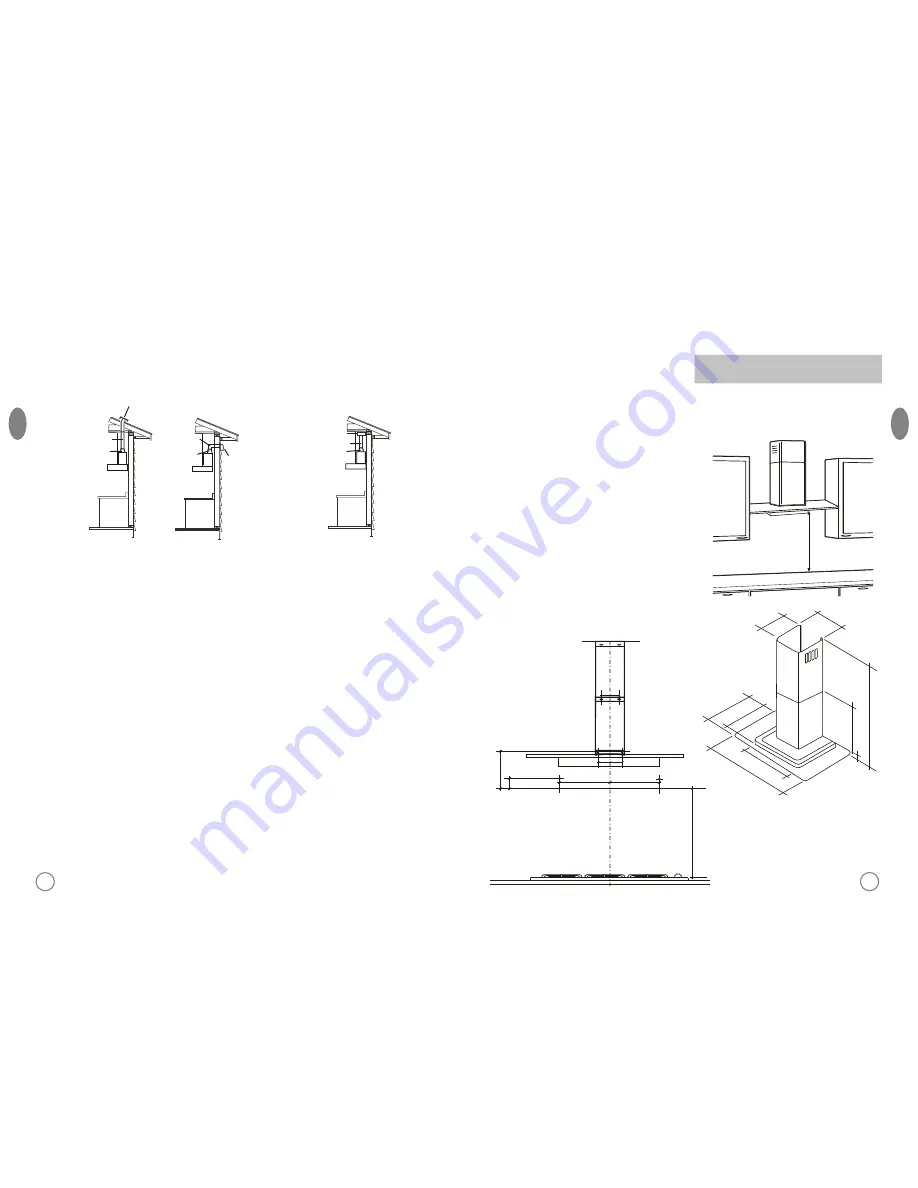
Ductwork installation guidelines
For safety reasons, ducting should vent directly outdoors (not into an attic,
underneath the house, into the garage or into any enclosed space).
Keep duct runs as short and straight as possible.
Duct fittings (elbows and transitions) reduce air flow efficiency.
Back to back elbows and "S" turns give very poor delivery and are not
recommended.
A short straight length of duct at the inlet of the remote blower gives the best
delivery.
Transition to duct from the integral blower or remote duct transition as close to
the downdraft as is possible.
The use of flexible metal round duct should only be used when no other duct
fitting exists. Limit use to short lengths and do not crush when making corners.
Examples of possible ducting
Roof pitch w/
Flashing and cap
Pipe
Transition
Pipe
Transition
sidewall cap
with gravity
damper
Deflector
Pipe
Transition
Vertical Discharge
Recirculating
Ductwork and wiring locations
•
Determine the exact location of
the vent hood.
•
Follow the image with
dimensions below to define the
height.
•
Installation height: 762mm (30")
gas cooktop/range or 610mm
(24") to 762mm (30") electric
cooktop/range.
•
Use a level to draw a horizontal
straight pencil line on the wall,
which is your desired installation
height.
•
Find the centerline of the
cooktop. Use a level to draw a
vertical straight pencil line on the
wall.
31
32
Check to be sure the line is perfectly
perpendicular.
Important
E
N
G
E
N
G
52
MIN.
600mm (eletric)
650mm (gas)
MAX.
800mm
125
95
95
117,5 117,5
254
125
M
in
7
9
5
-
M
a
x
1
1
3
0
320
280
500
425
500
900
540
Altura
Summary of Contents for FJWC369TEIS
Page 25: ...C072F_biling_090225R ...








































